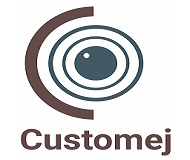Introduction
Managing chronic conditions such as diabetes can be challenging, particularly for veterans who may have unique health needs stemming from their service experiences. The Department of Veterans Affairs (VA) has embraced innovative solutions like VA Remote Patient Monitoring to address these challenges, providing a tailored care approach for veterans living with diabetes.
This program’s technology integration in patient care demonstrates a significant transformation in healthcare services, ensuring veterans receive continuous, comprehensive support regardless of location. VA Remote Patient Monitoring enables healthcare providers to track patients’ health metrics in real time, facilitating early intervention and promoting better health outcomes.
Understanding VA Remote Patient Monitoring
VA Remote Patient Monitoring is a part of the broader Telehealth initiative aimed at improving accessibility and continuity of care for veterans. The program uses telecommunication technology to remotely monitor patients’ health data, such as blood glucose levels, weight, blood pressure, and other vital signs. Specialized devices and applications relay this data to healthcare providers, who can review and assess the information without the patient needing to be physically present at a healthcare facility. This initiative mainly benefits veterans residing in rural areas with limited healthcare access.
The Challenge of Diabetes Among Veterans
Diabetes is a prevalent condition within the veteran population. According to the VA, veterans are significantly more likely to develop diabetes compared to the general population, a disparity attributed to factors including lifestyle issues, stress, and exposure to different environmental hazards during military service. Managing diabetes requires constant attention to lifestyle choices, medication adherence, and monitoring of blood sugar levels to prevent complications such as cardiovascular disease, neuropathy, and kidney damage.
Enhanced Monitoring and Early Intervention
One critical benefit of VA Remote Patient Monitoring is the ability to offer continuous supervision of a veteran’s health status. Regular health data submissions allow healthcare providers to detect potential problems early, enabling them to intervene before a condition exacerbates. Alert systems can be triggered if specific parameters exceed defined thresholds, prompting immediate action.
Personalized Care Plans
VA Remote Patient Monitoring supports the creation of individualized care plans that cater to each veteran’s specific needs and circumstances. By analyzing the data collected through the monitoring system, healthcare providers can tailor treatment strategies that align with the patient’s lifestyle and health goals, optimizing diabetes management.
Improved Patient Engagement and Education
Engagement and education are crucial components of effective diabetes management. VA Remote Patient Monitoring empowers veterans by actively involving them in their health management process. Through access to their health data, veterans become more aware of how lifestyle choices affect their blood sugar levels. This awareness encourages adherence to recommended lifestyle changes and medical treatment, fostering a sense of ownership over their health.
Reduced Hospital Visits and Healthcare Costs
The traditional management of diabetes often requires frequent physician visits, which can be burdensome both financially and logistically for veterans, especially those living in remote areas. VA Remote Patient Monitoring helps mitigate these challenges by allowing virtual consultations and remote check-ups. This reduces the need for in-person visits and helps lower associated healthcare costs, thus reducing the economic burden on the VA healthcare system and veterans.
Implementation and Technology
VA Remote Patient Monitoring utilizes various technological tools to achieve its goals. Devices designed to measure blood glucose, blood pressure, and other relevant health metrics are provided to veterans, and these readings are transmitted via secure channels to healthcare providers. Software applications facilitate the interpretation of data, and dashboards are often used to present data in an easily comprehensible format for both patients and providers.
Implementing these technologies requires careful attention to data security, patient training, and technology support. Educational sessions are conducted to ensure veterans understand how to use the monitoring devices and applications effectively, and continuous support is provided to help navigate any technological challenges that may arise.
Overcoming Challenges
While the benefits of VA Remote Patient Monitoring are evident, some challenges must be addressed to ensure its efficacy. Technical difficulties, such as inconsistent internet access, device malfunctions, or data transmission errors, can disrupt the monitoring process. Additionally, some veterans may encounter initial resistance due to unfamiliarity with technology or apprehension about sharing personal health data digitally.
To overcome these challenges, the VA has implemented support systems, including technical assistance hotlines and instructional materials, to help veterans and their families become comfortable with the technology. Outreach initiatives are also in place to educate veterans on the benefits of remote monitoring and to reassure them about data privacy concerns.
Future Directions and Innovations
The future of VA Remote Patient Monitoring holds promising prospects for further enhancement of diabetes care among veterans. Technological advancements like machine learning and wearable health devices are expected to amplify the program’s capabilities, providing even more refined and predictive insights into patient health. These innovations may lead to more personalized and proactive intervention strategies. Moreover, continued collaboration with technology companies and healthcare providers will help drive ongoing improvements in service delivery and patient outcomes.
Conclusion
VA Remote Patient Monitoring DocVA exemplifies a progressive approach to managing diabetes in veterans. It leverages technology to bring healthcare solutions closer to those who need them most. By offering tailored care, facilitating early intervention, reducing healthcare costs, and enhancing patient engagement, the program contributes significantly to the well-being of veterans with diabetes.
As technology evolves, so will the methodologies in remote patient monitoring, opening doors to even greater possibilities in enhancing veteran healthcare services. Through VA Remote Patient Monitoring, the VA demonstrates a commitment to improving health outcomes for veterans, ensuring they receive the high-quality care they deserve.




